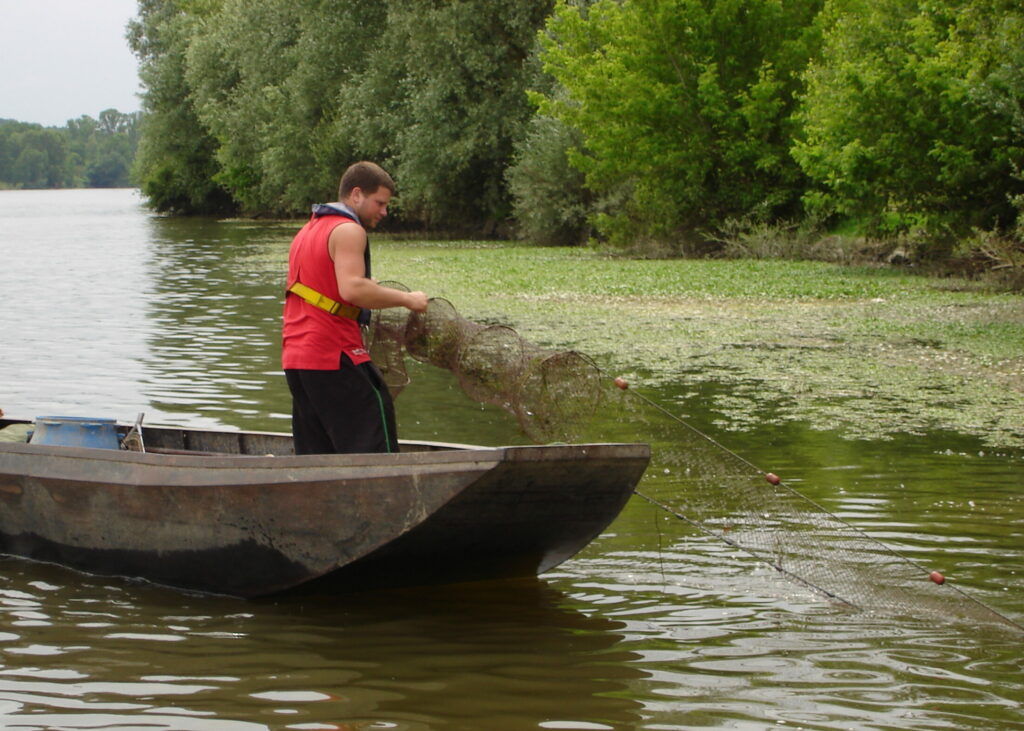Rivers and Lakes
Eel fisheries have developed in many ecosystems and adapted to the different behaviours of the species.
These fisheries exist on large rivers such as the Loire, the Gironde-Garonne-Dordogne river system, the Adour, but also on numerous tributaries or coastal rivers such as the Vilaine, the Charente rivers, but also lakes such as the Grand-Lieu lake or fresh and salt marshes.

Yellow eels are dispersed in riverine habitats, but may return to estuarine and sometimes marine habitats. It is at the time of their diffusion either to feed or to find new territories in the rivers that they can be captured by nets, fyke nets or lines.
At the time of migration, after the first floods, silver eels will migrate downstream and then to the sea. In large rivers such as the Loire, they are caught by “guideaux” or “dideaux”, whose numbers are constantly decreasing. These fishing devices capture large eels, the vast majority of which are females, whereas in the lower reaches of rivers, the basket traps capture smaller eels, the vast majority of which are males.
In lakes such as Grand-Lieu Lake, the ecosystems are very diversified. The Grand-Lieu Lake is classified as a national and regional nature reserve. It is classified as a wetland of international importance by the Ramsar Convention. Its surface area varies greatly, from 3700 ha in summer to 6500 ha in winter. There are open waters, wooded reedbeds, wet meadows and floating grass beds which allow eels to thrive from the glass-eel to the silver eel stage.